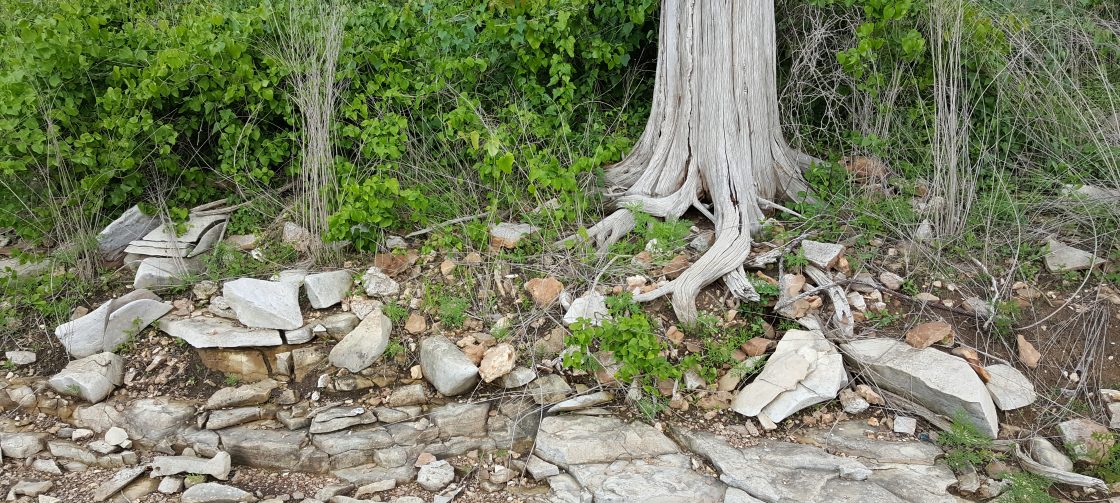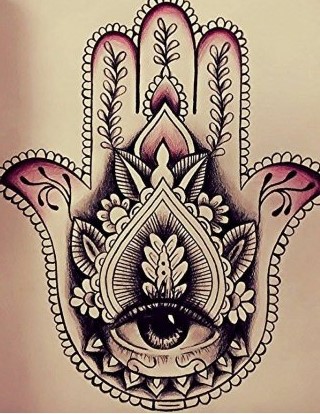What is idolatry anyway?
I always thought that bowing to an image or cultic idol in a pagan temple was idolatry. Well, yes! But what is the essence of Idolatry and can it be something that is even more pervasive, less obvious and more accepted by society than a pilgrimage to the shrine of a pagan god? I know that for Catholics, the explanation given them is that it is not the stone they are worshiping but that they are actually being reminded of whom they are praying to by a visible image. For some reason the Catholic Bible has deleted a commandment from the 10 words of YHVH on Sinai: “you shall not make to yourselves a carved image…you shall not bow yourself to them nor serve them.” Exodus 20:4 But before we get really tough with the Catholics, maybe we should look at what is the real essence of the problem of idolatry.
Here is another Torah text:
Deut. 12:30-31 Beware that you do not go astray after them, after YHVH your Elohim destroys them from before you, and do not ask about their gods and say, ‘How were the nations serving these their gods, that I may also do like them?’ But you shall not do so to YHVH your Elohim, because everything that YHVH despises and hates they have done for their gods…”
So, what other things did the nations do for their gods? And what is the intrinsic thought behind idolatry? Basically this—that a material object can transfer good or bad to a person and can become an item of our focus rather than the ONE and only Elohim who is uncontainable, uncontrollable, unfathomable, indescribable and on and on ad infinitum. There is more truth to be told in what YHVH is not than what He is. If we could define Him we would be equal to him. God forbid!
So lets look at a few things…that have been seen as having powers from a blessing that they may have been associated with.
A Biblical Example:
Gideon, a judge of Israel– righteous as well as chosen of YHVH to be a great warrior, deliverer.and judge of Israel for many years, 40 of which Israel had peace in the land, made an ephod before he died and hung it in his city. It later became a snare to his people. (Judges 8:27) Why? Because the people saw it as the object that brought blessing and because Gideon made it, it became revered as if having his blessing.
Memorabilia:
Many people save memorabilia to remember their loved ones who have passed on. There is no problem in that. However, if that object is seen as something that contains the essence of the dead relative and brings that essence, or any quality of good or bad into the home or house of worship, then it is counted an object of worship—an idol. How so? If we look to anything other than the Creator as having power to bless or curse, then we are directing to it, undue “worship” even if in the slightest degree.
Amulets:
So how about amulets? That should be easy enough. If an item is seen as having power to protect us then it is replacing the great Protector YHVH who is always with us. We have no need of amulets, not even to remind us of the protection of YHVH nor any blessing. Why? Because that is what the pagans did for their gods, which by the way can be as small as an amulet. But do you worship or serve it? Well, just ask yourself what happens if you lose it…
The Mezzuzah:
Now this may be something very touchy, but consider the case of the mezzuzah on the doorposts. Yes, we must have them. It is a commandment. But how are we viewing them? Is that little scroll inside with a material ink an paper copy of the NAME on it, what keeps us safe? Think about it! So, I have been told over and over to have a sofer check the mezzuzahs on our doors. When I fell and twisted my ankle, many were worried that something was wrong with the mezzuzah. If, God forbid someone in the house gets Covid, the same question comes around. But why do we need this object to be in rabbinic perfection to receive the protection of the Most High YHVH? Where does it say that in the Torah? It doesn’t! So, what was the purpose of the mezzuzah anyway? And by the way, the word mezzuzah means doorpost. So what is the object called? Here is Deut 6:9 “and you shall inscribe them on your doorposts and upon your gates.” And in Hebrew:
וּכְתַבְתָּ֛ם עַל־מְזֻז֥וֹת בֵּיתֶ֖ךָ וּבִשְׁעָרֶֽיךָ׃
The verse does not refer to an object at all. It says to write the words of YHVH on the doorposts. So how has the mezzuzah in it’s present form come about as a tradition?
Years ago in California, I paid over $100 for a Kosher parchment scroll that had been written by a sofer and imported to the United States. I then put it inside the little box (mezzuzah) made for it and had the congregation come and install it, hold a kiddish service and bless my office. I believed I had to do this. I suppose there was nothing wrong with that, but it was not necessary. Later someone pointed out: “Why don’t you just write your own Shema on a piece of paper and stuff it with that. It would be more meaningful, and actually fulfill the commandment more closely.”
But, however you put the words of the Almighty on the doorpost, the custom is fine, but what matters is what power you give to the object or writing that you do. The object has no power at all. The command was to remember that YHVH is ONE and that there is no other. (If you think about it, when you give the mezzuzah power to protect you, you are actually denying who it is that does so.) There IS NO OTHER thing or person or material item that has any power to bless or curse. That, my friend, is idolatry!
Hamsa:
And we should mention the Hamsa. After something so simple as the wrong focus in belief in the case of the mezzuzah, it is surely obvious that the Hamsa has no power to protect and the Evil Eye has no power to curse. Let’s get things straight.
There is important history of the Hamsa. Where did it come from? What did is symbolize? Was it ever used in other religions? Here is what Wikipedia says:
“The hamsa (Arabic: خمسة, romanized: khamsah, Hebrew: חַמְסָה, romanized: ḥamsā) is a palm-shaped amulet popular throughout the Maghreb and in the Middle East and commonly used in jewelry and wall hangings. Depicting the open right hand, an image recognized and used as a sign of protection in many times throughout history, the hamsa is believed by Middle Easterners, to provide defense against the evil eye. The hamsa holds recognition as a bearer of good fortune among Christians in the Middle East as well. “Khamsah is an Arabic word that means “five”, but also “the five fingers of the hand”. The Hamsa is also variously known as the Hand of Fatima after the daughter of Muhammad, the Hand of Mary, the Hand of Miriam, and the Hand of the Goddess.”1 Wikipedia
So yes, it is used by other religions and is an item of luck which can also be called worship when it is believed in.
What do Rabbinic Jews say about it?
From My Jewish Learning: “What Is A Hamsa? Although it may derive from Islamic or pagan culture, the hamsa today has become a Jewish and Israeli symbol…It is difficult to pinpoint the exact time when hamsas emerged in Jewish culture, though it is clearly a symbol of Sephardic nature. Jews might have used the hamsa to invoke the hand of God, or to counteract the Evil Eye with the eye embedded in the palm of the hand. Some hamsas contain images of fish, in accordance with Rabbi Yose son of Hanina’s statement in the Talmud that the descendants of Joseph, who received Jacob’s blessing of multiplying like fish in Genesis 48:16, are protected from the Evil Eye like fish. He explains: “the water covers the fish of the sea so the eye has no power over them (Berakhot 55b)…other icons besides eyes and fish have also found their way into the hamsa, including the Star of David, prayers for the traveler, the Shema, the blessing over the house, and the colors of red and blue, both of which are said to thwart the Evil Eye…“The symbol of the hand, and often of priestly hands, appears in kabbalistic manuscripts and amulets, doubling as the letter shin, the first letter of the divine name Shaddai. This mapping of the human hand over the divine name and hand might have had the effect of creating a bridge between the worshipper and God.”2
From a historical site:
“Hamsa is a universal protective sign and we encounter it in faiths. It is believed the symbol brings its owner happiness, luck, health, and good fortune. Hamsa offers protection from harm caused by the evil eye. As previously mentioned in Ancient Pages, there is an ancient, superstitious, and almost universal belief that certain people possess the supernatural power to cause disaster, illness, calamity and even death. They have the ability to do it with a gaze or stare that gives an unpleasant emotion. The evil eye is widely feared in many parts of the world. This is why the Hamsa symbol can be found today throughout the Middle East.3” Ancient Pages/hamsa
Soon we must look at the practice of going to graves to worship, but for now, remember: it is the same thing; no person nor stone nor grave nor dead person, has any power to bless or curse. Speaking to ask the dead to mediate with YHVH is invoking the dead. Necromancy! And why would we need a dead mediator when the King of Kings hears our prayers? This too comes under the judgment of the verse we started with:
Deut. 12:30-31 Beware that you do not go astray after them, after YHVH your Elohim destroys them from before you, and do not ask about their gods and say, ‘How were the nations serving these their gods, that I may also do like them?’ But you shall not do so to YHVH your Elohim, because everything that YHVH despises and hates they have done for their gods…”
Psa 135:15-19 “The idols of the nations are silver and gold, the work of men’s hands. They have mouths, but cannot speak; they have eyes, but cannot see; they have ears, but cannot hear,
nor is there breath in their mouths. Those who fashion them, all who trust in them, shall become like them. O house of Israel, bless YHVH.”
1https://en.wikipedia.org/wiki/Hamsa
2https://www.myjewishlearning.com/article/hamsa/
3https://www.ancientpages.com/2020/05/20/ancient-symbol-hamsa-meaning-history-explained/

